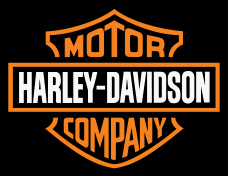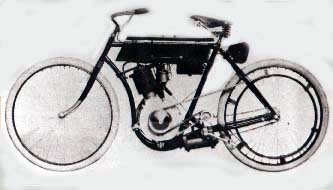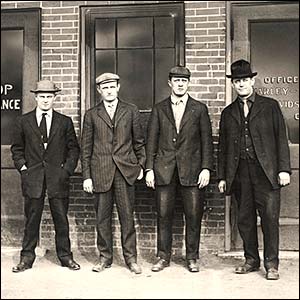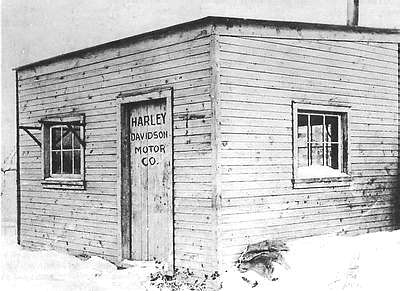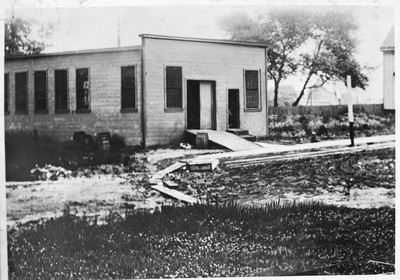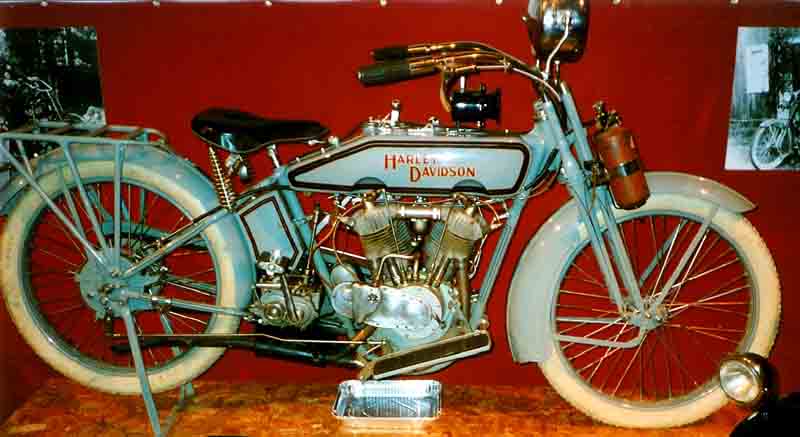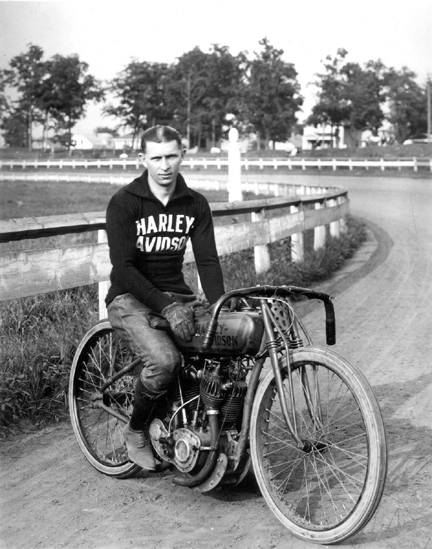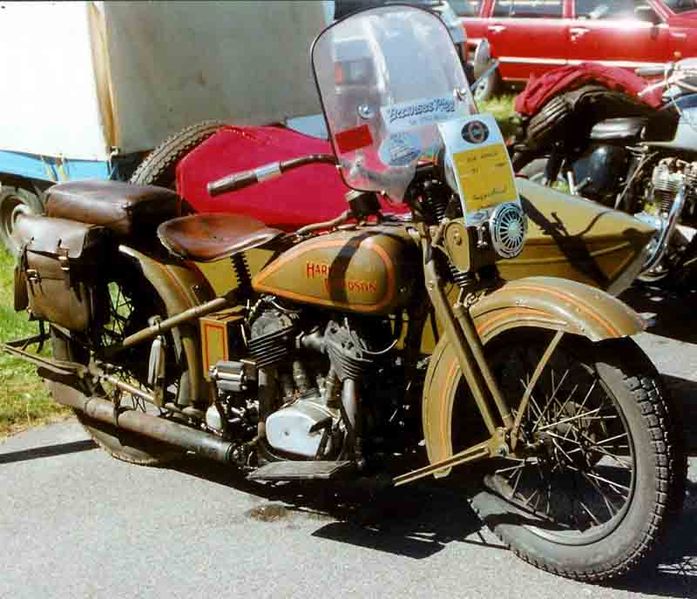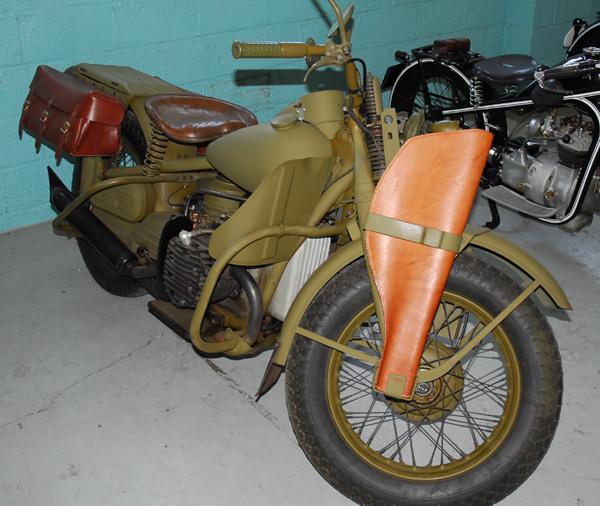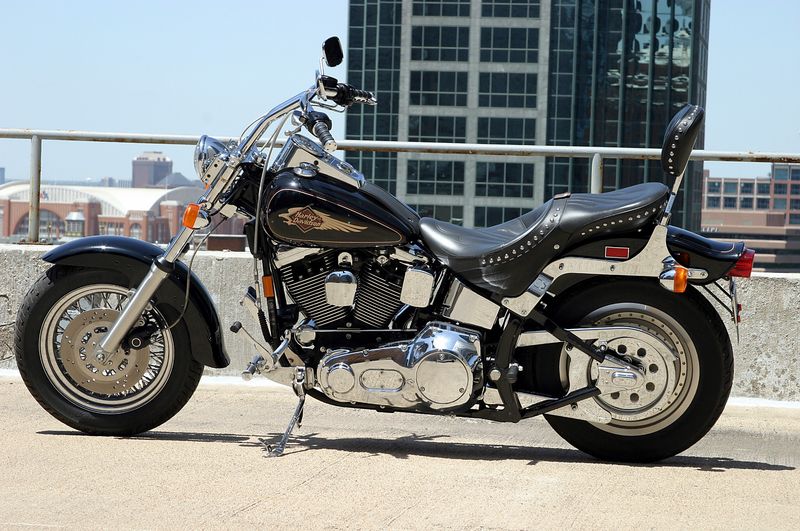|
|
| In 1901, William S. Harley, age 21, drew up plans for a small engine with a displacement of 7.07 cubic inches (116 cc) and four-inch (102 mm) flywheels. The engine was designed for use in a regular pedal-bicycle frame.
Harley and his childhood friend Arthur Davidson labored on their motor-bicycle using the northside machine shop at the home of their friend, Henry Melk. |
|
| Upon completion in 1903 With the help of Arthur's brother, Walter Davidson. the boys found their power-cycle unable to conquer Milwaukee's modest hills without pedal assistance. Will Harley and the Davidsons quickly wrote off their first motor-bicycle as a valuable learning experiment. |
|
The prototype of the new loop-frame Harley-Davidson was assembled in a 10- by 15-foot (3 by 5 meter) shed in the Davidson family backyard. Most of the major parts, however, were made elsewhere, including some probably fabricated at the West Milwaukee railshops where oldest brother William A. Davidson was then toolroom foreman. This prototype machine was functional by 8 September 1904 when it competed in a Milwaukee motorcycle race held at State Fair Park. It was ridden by Edward Hildebrand and placed fourth. This is the first documented appearance of a Harley-Davidson motorcycle in the historical record.
|
|
| In January 1905, small advertisements were placed that offered bare Harley-Davidson engines to the do-it-yourself trade. By April, complete motorcycles were in production on a very limited basis. That year the first Harley-Davidson dealer, Carl H. Lang of Chicago, sold three bikes from the dozen or so built in the Davidson backyard shed. |
|
| In 1906, Harley and the Davidsons built their first factory on Chestnut Street (later Juneau Avenue). This location remains the Motor Company’s corporate headquarters today. The first Juneau Avenue plant was a 40 by 60-foot (18 m) single-story wooden structure. That year around 50 motorcycles were produced. |
|
| In 1907, William S. Harley graduated from the University of Wisconsin-Madison with a degree in mechanical engineering. That year additional factory expansion came with a second floor and later with facings and additions of Milwaukee pale yellow ("cream") brick. With the new facilities production increased to 150 motorcycles in 1907. The company was officially incorporated that September. They also began selling their motorcycles to police departments around this time, a market that has been important to them ever since. |
|
| In 1911, an improved V-Twin model was introduced. The new engine had mechanically operated intake valves, as opposed to the "automatic" intake valves used on earlier V-Twins that opened by engine vacuum. With a displacement of 49.48 cubic inches (810 cc), the 1911 V-Twin was smaller than earlier twins, but gave better performance. After 1913 the majority of bikes produced by Harley-Davidson would be V-Twin models. |
|
World War I
In 1917, the United States entered World War I and the military demanded motorcycles for the war effort.World War I was the first time the motorcycle had been adopted for combat service. Harley-Davidson provided over 20,000 machines. |
|
The Depression
The Great Depression began a few months after the introduction of their 45 cubic inch model. Harley-Davidson's sales plummeted from 21,000 in 1929 to less than 4,000 in 1933. In order to survive, the company manufactured industrial powerplants based on their motorcycle engines. They also designed and built a three-wheeled delivery vehicle called the Servi-Car, which remained in production until 1973. |
|
World War II
One of only two American cycle manufacturers to survive the Great Depression, Harley-Davidson again produced large numbers of motorcycles for the US Army in World War II and resumed civilian production afterwards, producing a range of large V-twin motorcycles that were successful both on racetracks and for private buyers. |
|
| In 1952, following their application to the US Tariff Commission for a 40% tax on imported motorcycles, Harley-Davidson was charged with restrictive practices. Hollywood also damaged Harley's image with many outlaw biker gang films produced from the 1950s through the 1970s, following the 1947 Hollister, CA biker riot on July 4. "Harley-Davidson" for a long time was synonymous with the Hells Angels and other outlaw motorcyclists. |
|
| In 1969, American Machinery and Foundry (AMF) bought the company, streamlined production, and slashed the workforce. This tactic resulted in a labor strike and a lower quality of bikes. The bikes were expensive and inferior in performance, handling, and quality to Japanese motorcycles. Sales declined, quality plummeted, and the company almost went bankrupt |
|
In 1981, AMF sold the company to a group of thirteen investors led by Vaughn Beals and Willie G. Davidson for $80 million. Inventory was strictly controlled using the Just In Time system.
Rather than trying to match the Japanese, the new management deliberately exploited the "retro" appeal of the machines, building motorcycles that deliberately adopted the look and feel of their earlier machines and the subsequent customizations of owners of that era. |
|
| The Harley-Davidson Museum opened to the public on July 12, 2008. Located east of the intersection of Sixth and Canal Streets near downtown, Milwaukee, Wisconsin. the 130,000-square-foot, three building project contains a large collection of motorcycles and other Harley-Davidson memorabilia. |
|

